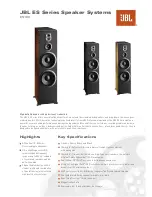
Part No. 729-110-040 Rev. 1.41 | June 2016
© 2016 Nelson Stud Welding, Inc. All Rights Reserved.
FUMES AND GASES
Fumes and gases can cause discomfort or harm,
particularly in confined spaces. Do not breathe fumes
and gases. Shielding gases can cause asphyxiation.
Therefore:
1.
Always provide adequate ventilation in the work area by natural or
mechanical means. Do not weld, cut, or gouge on materials such as
galvanized steel, stainless steel, copper, zinc, lead, beryllium, or
cadmium unless positive mechanical ventilation is provided. Do not
breathe fumes from these materials.
2.
Do not operate near degreasing and spraying operations. The heat or arc
rays can react with chlorinated hydrocarbon vapors to form phosgene, a
highly toxic gas, and other irritant gasses.
3.
If you develop momentary eye, nose, or throat irritation while operating,
this is an indication that ventilation is not adequate. Stop work and take
necessary steps to improve ventilation in the work areas. Do not continue
to operate if physical discomfort persists.
4.
Refer to ANSI/ASC Standard Z49.1 (see listing on next page) for specific
ventilation recommendations.
EYE PROTECTION
Flying metal can injure eyes. Welding, chipping, wire
brushing and grinding can cause sparks and flying
metal. As welds cool, they can throw off slag.
Therefore:
1.
Wear approved safety glasses with side shields even under your
welding helmet.
2.
Warn others nearby about flying metal hazard.
HEARING PROTECTION
Prolonged Noise from Capacitor Discharge welding
applications can damage hearing if levels exceed
limits specified by OSHA. Therefore:
1.
Use Approved ear plugs or ear muffs if noise level is high.
2.
Warn others nearby about noise hazard.
3.
For additional information, refer to OSHA Safety Standards 3074.
CYLINDER HANDLING
Cylinders, if mishandled, can rupture and violently
release gas. Sudden rupture of cylinder, valve, or
relief device can injure or kill. Therefore:
1.
Use the proper gas for the process and use the proper pressure reducing
regulator designed to operate from the compressed gas cylinder. Do not
use adaptors. Maintain hoses and fittings in good condition.
2.
Always secure cylinders in an upright position by chain or strap to
suitable hand trucks, undercarriages, benches, walls, post, or racks.
Never secure cylinders to work tables or fixtures where they may become
part of an electrical circuit.
3.
When not in use, keep cylinder valves closed. Have valve protection cap
in place if regulator is not connected. Secure and move cylinders by
using suitable hand trucks. Avoid rough handling of cylinders.
4.
Locate cylinders away from heat, sparks, and flames. Never strike an arc
on a cylinder.
5.
For additional information, refer to CGA Standard P-
1, “Precautions for
Safe Handling of Compressed Ga
ses in Cylinders”, which is available
from Compressed Gas Association, 1235 Jefferson Davis Highway,
Arlington, VA 22202.
ADDITIONAL SAFETY INFORMATION
For more information on safe practices for electric
arc welding, refer to the following publications.
1.
ANSI/ASC Z49.1 Safety in Welding and Cutting
2.
AWS C5.1 Recommended Practices for Plasma Arc Welding
3.
AWS C5.6 Recommended Practices for Gas Metal Arc Welding
4.
AWS SP Safe Practices (Reprint) Welding Handbook
5.
ANSI/AWS F4.1 Recommended Safe Practices for Welding and Cutting
of Containers That Have Held
Hazardous Substances.
EQUIPMENT MAINTENANCE
Faulty or improperly maintained equipment can cause
injury or death. Therefore:
1.
Always have qualified personnel perform the installation, troubleshooting,
and maintenance work. Do not perform any electrical work unless you are
qualified to perform such work.
2.
Before performing any maintenance work inside a power source,
disconnect the power source from the incoming electrical power.
3.
Maintain cables, grounding wire, connections, power cord, and power
supply in safe working order. Do not operate any equipment in faulty
condition.
4.
Do not abuse any equipment or accessories. Keep equipment away from:
heat sources such as furnaces, wet conditions such as water puddles
and inclement weather oil or grease corrosive atmospheres.
5.
Keep all safety devices and cabinet covers in position and in good repair.
6.
Use equipment only for its intended purpose. Do not modify it in any
manner.
Summary of Contents for ArcCharger N550C DOMESTIC
Page 18: ...Part No 729 110 040 Rev 1 41 June 2016 2016 Nelson Stud Welding Inc All Rights Reserved 17 ...
Page 60: ...Part No 729 110 040 Rev 1 41 June 2016 2016 Nelson Stud Welding Inc All Rights Reserved 59 ...
Page 62: ...Part No 729 110 040 Rev 1 41 June 2016 2016 Nelson Stud Welding Inc All Rights Reserved 61 ...
Page 64: ...Part No 729 110 040 Rev 1 41 June 2016 2016 Nelson Stud Welding Inc All Rights Reserved 63 ...





































